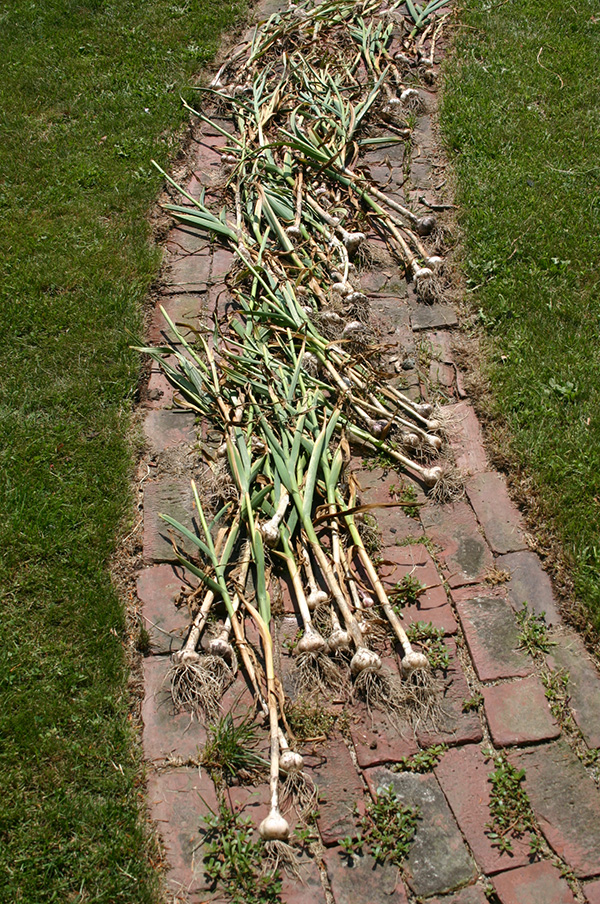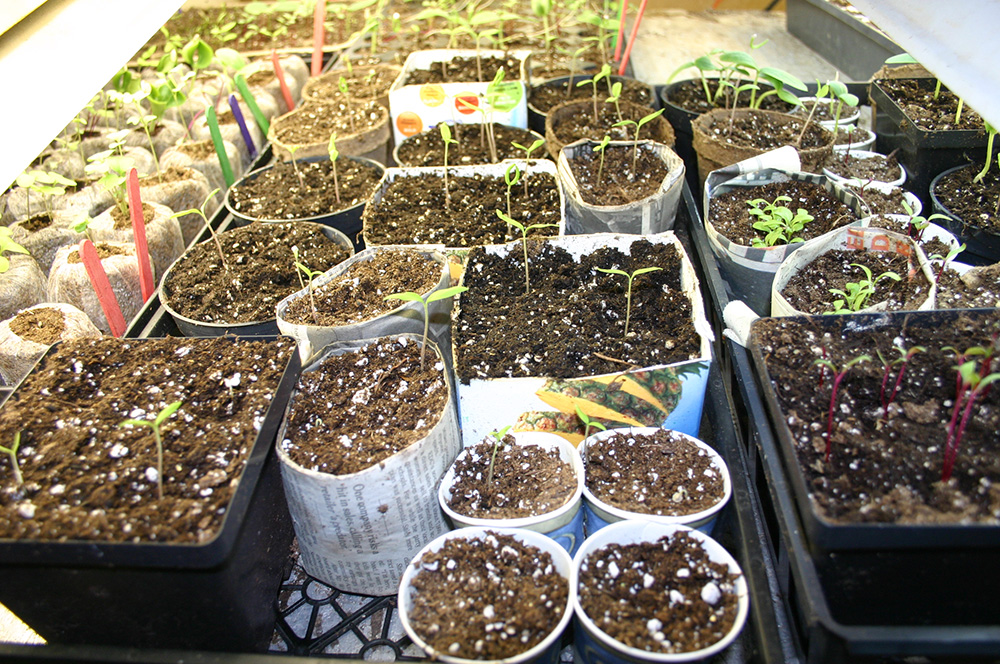
Many vegetables in the garden are now ready to be picked, most notably garlic and onions. Some of the potato plants are also ready for harvest. If you grow as I do, in four-foot (1.2m) wide beds rather than in rows, removing plants from the garden leaves large open spaces. For example, I planted garlic 6” (15 cm) apart, in a 4’ x 6’ (approximately 1.2m x 1.8m) garden bed. Now that the garlic has been pulled and is being hardened off, the former garlic bed is available for a second crop.
This is where the greenhouse comes into use . About four weeks ago I started beans in trays in the greenhouse. Now they are 2” to 3” (100mm to 150mm) high and are ready to be transplanted into the space where I grew the garlic. Coincidentally, the garlic is now hardening off in the greenhouse space where the beans were started. Planting beans where garlic once grew has several benefits. It helps to replace nitrogen used by the garlic, it also generates a fall harvest of green beans and keeps soil nutrients from eroding with all the summer rain we’ve had. If you plan to start a second crop on a former garlic or onion bed, try not to plant brassicas (cabbage, cauliflower, broccoli) in the space. Brassicas and garlic are not compatible crops and don’t do well next to or following each other.

Similarly, the pea plants have been cleaned out, leaving space for beets, turnips, carrots and other root crops. With any luck these crops should be ready before October when we might see frost. Even if frost occurs, covering them with a straw mulch will allow them to be picked until the new year.
The next space that will become available is where the fingerling potatoes (so tasty in the air fryer!) are now growing. I have already started broccoli raab, kale and chard in the greenhouse to transplant into this bed. By starting these crops inside, it stops mice and birds from eating the seeds before they get a chance to germinate. In addition, it cuts down on the time needed for plants to grow to maturity. Making it easy to grow two and sometime three crops in one season.

By starting vegetables and flowers in the greenhouse a few weeks before a garden crop is harvested, it is possible to utilize the greenhouse in what is normally a quite time of year. It also keeps the garden filled until frost.


